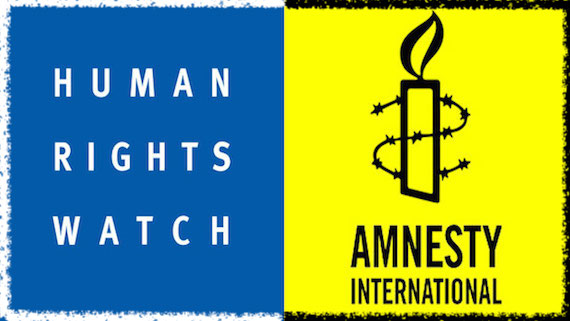
An argument endorsed by 192 Ethiopians and Ethiopian origin individuals and 36 organizations As argued below, we affirm that the findings and recommendations of the report are fraught with inconsistencies and biases and lack methodological rigor and objectivity.
Flagrant Perpetuation of the TPLF Narrative of “Western Tigray”
Although the report acknowledges the fact that the so-called Western Tigray was known as Welkait –Tegede –Humera (collectively “Wolkait”) and was part of the Province of Begemeder (Gondar) before the Tigray People’s Liberation Front (TPLF) annexed it, for its strategic attraction, to Tigray in 1991, it prefers to perpetuate the use of the misnomer so as to confer international and political legitimacy to TPLF’s claim to the territory. If that had not been its apparent purpose, there is no reason to prefer a newly minted name that does not exist in the lexicon of the local population or the history of the region. This fact, along with the report’s evocative title (“We will erase you from this land”), presages the heavily biased and tendentious nature of the report.
Biased and One-sided Reporting of Atrocities
While the report is replete with numerous citations, it nowhere makes even as much as a passing mention of the animus toward Amharas the TPLF has harbored since its inception as a liberation movement in 1975 by openly declaring the Amhara people as its sworn enemy in its founding document. Notably, the report blithely ignores the atrocities the TPLF has committed while forcibly annexing Wolkait to Tigray in the mid-70s and during almost three decades of its brutal rule. Thanks to the work of a team of scientists in Gondar University, however, TPLF’s atrocities have recently come to light for the world to see. This team of scientists has reported that the remains of fifty-nine thousand Amhara victims have been discovered in several mass graves in Wolkait. Yet, the joint report does not reference the team’s report, nor have its authors bothered to consult the team about these findings.
In rare instances, the report begrudgingly acknowledges that the TPLF security forces abused the rights of Amharas “over many years.” Yet, it makes absolutely no effort to describe in any detail the gravity of these abuses as it has done on behalf of members of the Tigray community residing in Wolkait. Because it does not take these abuses as seriously, it does not call for any accountability of TPLF officials in the same way that it has been quick to do so against Amhara officials currently administering the Wolkait region. Indeed, the report recommends the suspension of these officials pending investigations into their actions, in utter disregard of their right to be presumed innocent until proven guilty.
While the report is quick to call for the demobilization of Amhara security forces, there is no similar call for the demobilization of thousands of militia the TPLF has mobilized to wage war and wreak havoc in the Amhara and Afar regions. The TPLF and its militia have shown by their actions and public statements that they are still waiting in the wings to forcibly retake Wolkait and in the process to cause even more death, mayhem and destruction than they have already caused. We would like to note in this regard the atrocities the TPLF has continued to inflict on the inhabitants of the Afar region.
Intrusiveness and Violation of Ethiopia’s Sovereign Rights
The call by the report for the disarming and demobilization of Amhara security forces, such as the Fano and militia, is totally unacceptable, for it is a clear violation of Ethiopia’s sovereign right to organize its security forces in any manner it deems fit. As enunciated in the UN “Declaration on Principles of International Law”, one of these fundamental principles concerns the sanctity of non-intervention in matters within the domestic jurisdiction of another state. It is interesting, although not too surprising, that the report’s call for demobilization of the Fano and Amhara militia echoes the position declared by the US Secretary of State a year or so ago, suggesting that AI and HRW do seem to be acting in concert with the US Government.
It is also noteworthy, though not surprising, that Amhara and Kunama natives of the region were systematically shunned in the interview process. There is absolutely no justification for their exclusion other than that their testimony would cast doubt on the credibility of the story spun by the TPLF. Curiously, the report offers no explanation or justification for this exclusion, leaving us to surmise that the omission must have been deliberate.
It is on the basis of self-serving interviews conducted in the Sudan and some in Tigray that the report accuses Amhara regional authorities of having engaged in a “coordinated” and “purposeful” policy of ethnic cleansing and other human rights violations. This conclusion is totally unconvincing, meritless and unfounded. For one thing, many of those interviewees are those who fled the area to avoid apprehension and accountability for the heinous crimes they committed in Mai-Kadra. For another, those who relocated to Tigray did so on their own fearing retaliation and accountability for the many abuses “over many years” the natives of the area suffered under TPLF rule, rather than as a consequence of an official policy of “ethnic cleansing”. As such, the allegation of “a coordinated and purposeful policy” of ethnic cleansing cannot stand close scrutiny. (One point worthy of note here is the egregious fact that the report dismisses, as a legitimate response, the November 2020 Mai-Kadra Massacres against Amharas by TPLF’s youth league.)
Also unwarranted is the report’s negative aspersion on the regional authorities of Wolkait for undertaking to resettle “hundreds of Amharas from the Amhara region and [those returning] from the Sudan.” Finding fault with the actions of the regional authorities in this regard completely ignores the fact that many of these settlers are natives of the area who were forced to leave their homes and farms by the TPLF since the mid-70s. Righting a wrong that remained unrequited for so long does not deserve to be seen in a negative light.
Perhaps, one of the strongest indicators of the sloppiness of the report is its assertion, citing the federal interim administration of Tigray, that 723,000 internally displaced persons (IDPs) from Western Tigray had been registered in other parts of Tigray. However, according to a report of the Federal Demographic Republic of Ethiopia Central Statistical Agency, conducted while the TPLF was in power, the projected total number of people in Western Tigray, including Amharas and other ethnic groups, for 2017 was only 410,662. This ridiculously inflated number, which cannot be justified by any known demographic principles, is indicative of the flawed and biased nature of the entire report.
Questionable Timing of the Release of the Report
Finally, it is curious that the joint report became public at a time when both Houses of the US Congress appear to be busy considering essentially similar bills aimed at imposing sanctions on Ethiopia. Given how often the international system seems to do the bidding of the US Government and its allies, including human rights organizations, the timing of the report hardly seems to be a coincidence. It is noteworthy that the US Government took no time to endorse the report and to call for “independent investigations” into alleged violations of human rights in Ethiopia. Given the release of the joint report and consideration of the US sanctions bills are occurring at almost the same time, and when we recall the earlier effort of the US Government and its allies to employ the Human Right Council’s process to do essentially what the report calls for, we believe that the sanctions bills and the joint report have been meant to work in tandem to accomplish the same overriding purpose: to coerce Ethiopia to submit to their demands and thereby to revive the political life of a terrorist organization that the Ethiopian populace has overwhelmingly rejected.
For all the foregoing reasons, we find the joint report of Amnesty International and Human Rights Watch simply one-sided, tendentious, bereft of methodological rigor, and, therefore, unacceptable.
(Source:- Borkena.com)
Editor’s Note: The views entertained in this article do not necessarily reflect the stance of The Ethiopian Herald
The Ethiopian Herald 30 April 2022





